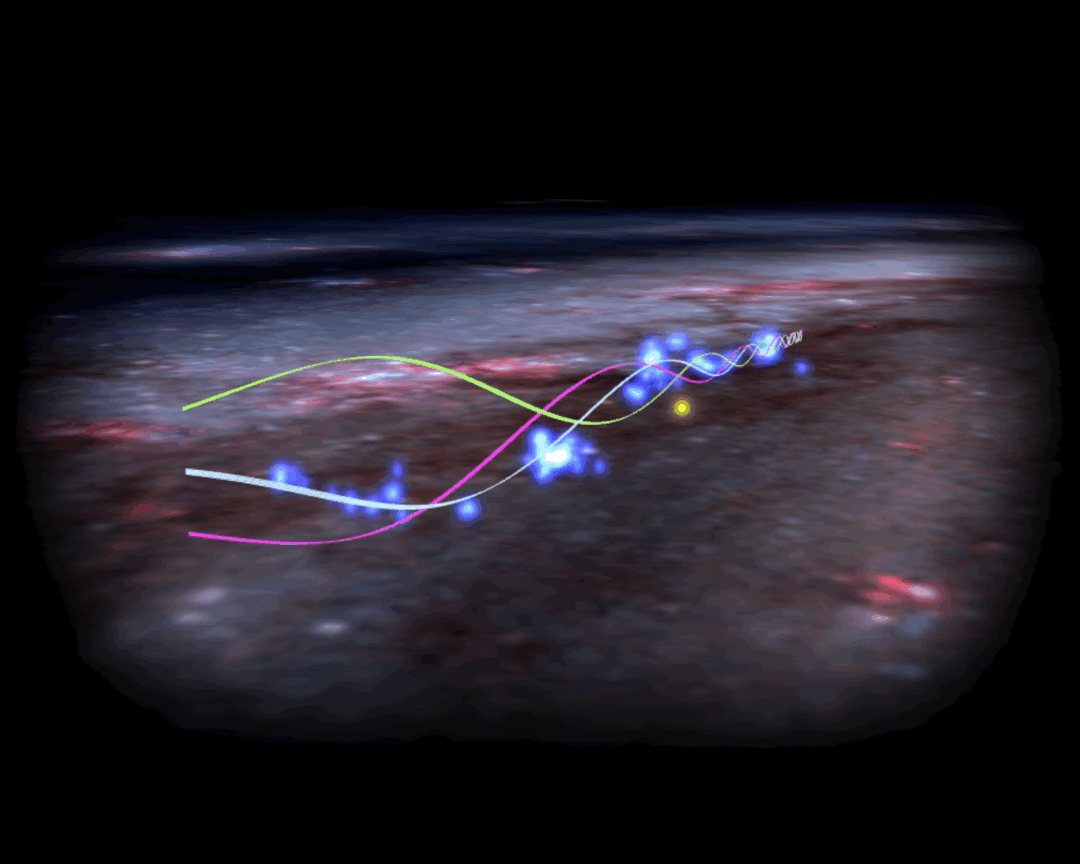2024-02-21 ミュンヘン大学(LMU)
 The Milky Way says hello: the Radcliffe wave in motion. © Ralf Konietzka / Harvard University
The Milky Way says hello: the Radcliffe wave in motion. © Ralf Konietzka / Harvard University
◆最新の論文では、この波が銀河の平面を振動し、銀河中心から遠ざかっていることが示されました。この波は、3D技術による銀河の周辺のマッピングによって明らかになりました。若い星団の動きから、ラドクリフ波は波のように振動していることが示され、その起源や構造の理解に関する興味深い問題が残されています。
<関連情報>
- https://www.lmu.de/en/newsroom/news-overview/news/astrophysics-the-radcliffe-wave-is-moving.html
- https://www.nature.com/articles/s41586-024-07127-3
ラドクリフ波は振動している The Radcliffe Wave is Oscillating
Ralf Konietzka,Alyssa A. Goodman,Catherine Zucker,Andreas Burkert,João Alves,Michael Foley,Cameren Swiggum,Maria Koller & Núria Miret-Roig
Nature Published:20 February 2024
DOI:https://doi.org/10.1038/s41586-024-07127-3
We are providing an unedited version of this manuscript to give early access to its findings. Before final publication, the manuscript will undergo further editing. Please note there may be errors present which affect the content, and all legal disclaimers apply.
Abstract
Our Sun lies within 300 pc of the 2.7-kpc-long sinusoidal chain of dense gas clouds known as the Radcliffe Wave.1 The structure’s wave-like shape was discovered using 3D dust mapping, but initial kinematic searches for oscillatory motion were inconclusive.2–7 Here we present evidence that the Radcliffe Wave is oscillating through the Galactic plane while also drifting radially away from the Galactic Center. We use measurements of line-of-sight velocity8 for 12CO and 3D velocities of young stellar clusters to show that the most massive star-forming regions spatially associated with the Radcliffe Wave (including Orion, Cepheus, North America, and Cygnus X) move as if they are part of an oscillating wave driven by the gravitational acceleration of the Galactic potential. By treating the Radcliffe Wave as a coherently oscillating structure, we can derive its motion independently of the local Galactic mass distribution, and directly measure local properties of the Galactic potential as well as the Sun’s vertical oscillation period. In addition, the measured drift of the Radcliffe Wave radially outward from the Galactic Center suggests that the cluster whose supernovae ultimately created today’s expanding Local Bubble9 may have been born in the Radcliffe Wave.



